Known for their eye-catching appearance and melodious songs, blackbirds are interesting species that often frequent bird feeders. However, they can become a big problem as they hog food, release unsightly droppings, and make way too much noise.
So, how to get rid of blackbirds from a bird feeder? You can prevent blackbirds from crowding your bird feeders by using selective feeders, installing wire cages, providing them their own separate food, carefully selecting feeding hours, regularly cleaning the feeding area, or giving them food they dislike.
To learn more about blackbirds taking over bird feeders, effective methods of deterring them, and other relevant information, simply read further this article!
What Is a Blackbird?

Blackbird is a broad term used to refer to a group of medium-sized North American birds that are members of the Icteridae family, which also includes grackles, meadowlarks, and orioles. Males of this bird group are known for their mostly black or iridescent plumage.
All blackbirds are considered omnivores as their diets largely consist of fruits, grains, insects, and seeds. When eating, they perform a feeding technique referred to as “marina” in which they use their beaks to probe, pry, or push into tight spaces such as crevices or beneath rocks.
Outside of the nesting season, they often flock and roost in congregations that can reach up to a million birds, sometimes joined by other bird species such as robins and starlings. In fact, “river of blackbirds” became a common term when residents from Arkansas spotted flocks containing more than 5 million birds in 2011 and 2019.
Types of Blackbird
Red-Winged Blackbird
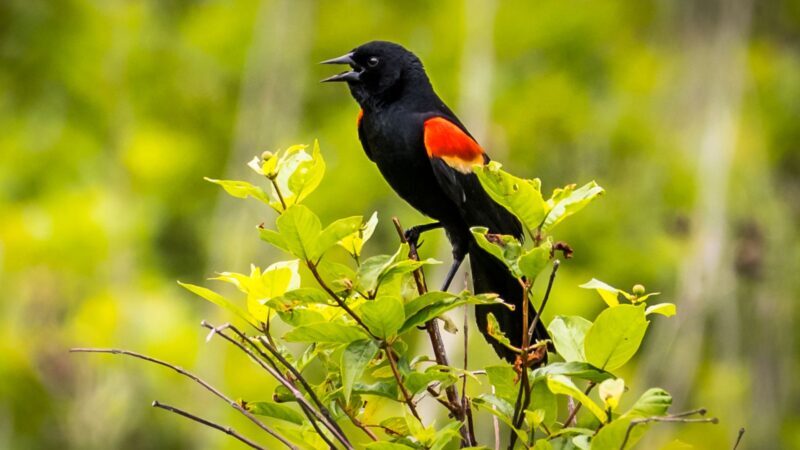
Named after its red shoulder and wing patches that are lined with yellow, pink, or white feathers, the Red-winged blackbird (Agelaius phoeniceus) is common in marshes, hayfields, ditches, bottomlands, and fields. It is a well-known wrecker of crop fields, especially corn, oats, and sunflowers.
Brewer’s Blackbird
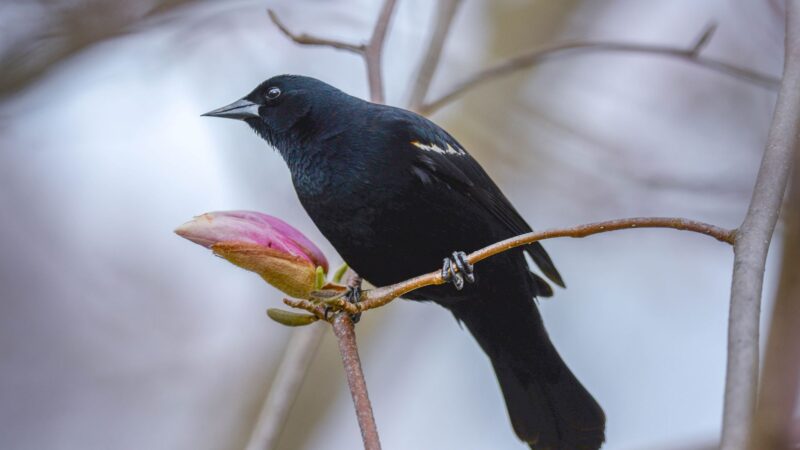
The Brewer’s blackbird (Euphagus cyanocephalus) is a robin-sized species that are black or brownish-gray in appearance, with males having whitish eyes and females having dark eyes. It lives in a variety of habitats but largely prefers lawns, pastures, and agricultural lands. It generally does not cause serious damage to feedlots.
Yellow-Headed Blackbird
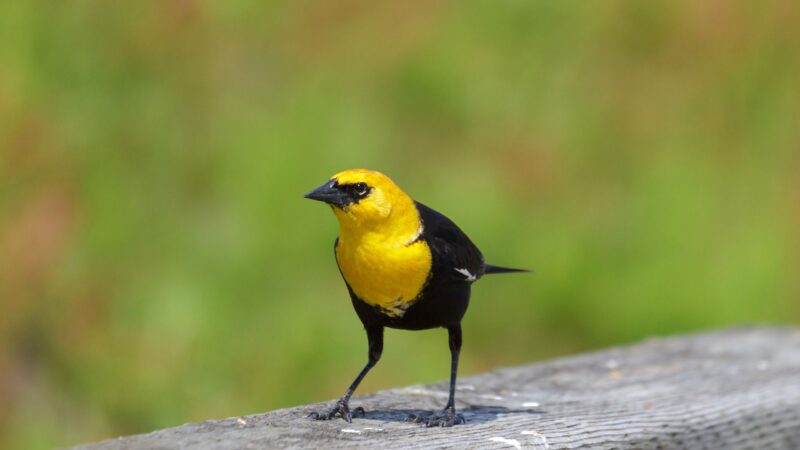
Known for its unmistakable yellow head and breast, white wing patch visible during flight, and overall black plumage, the Yellow-headed blackbird (Xanthocephalus xanthocephalus) occurs in large numbers and causes minor damage in meadows, agricultural fields, and pastures.
Why Keep Black Birds Away From Your Feeder?
Although blackbirds are of biological importance to humans as they can effectively control insect pest populations, they are quite aggressive in nature and may attack other birds while eating from your bird feeders.
By deterring other birds, you will lose a diverse bird ecosystem in your lawns or backyards while blackbirds dominate the majority of the species that eat from your feeders.
Additionally, they prefer roosting in shady, deciduous trees found in urban and suburban communities. It is possible to see thousands of blackbirds occupying a line of trees in one area, making their prevalence a nuisance or health hazard for humans due to their noise and release of foul-smelling droppings.
Related: How to Prevent Birds Nesting in Roof? | Information and Control Guide
How to Get Rid of Black Birds From Your Feeder?
1. Choose a Bird Feeder Wisely
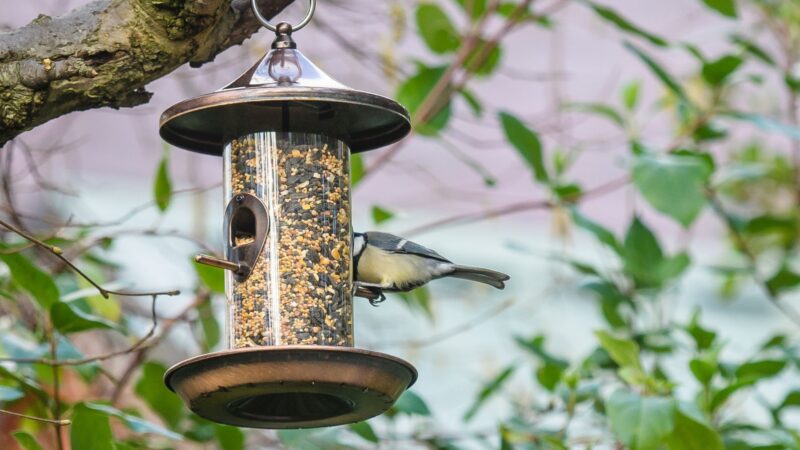
Swap your bird feeder with a smaller design so that blackbirds will have a harder time obtaining food. Some ideal choices are small hanging feeders since blackbirds feed on the ground, tube feeders that have small openings or ports and short perch lengths, or perch feeders that are specifically designed to accommodate lighter bird weights.
2. Install a Wire Cage
Encase bird feeders with cages that have small food holes preferably made from chicken wire to discourage bird assaults from blackbirds and even other similarly larger-sized, aggressive species.
3. Feed Blackbirds Separately
Set up a separate location away from your usual feeder spot where you can feed blackbirds without them competing against other bird species. Provide them with weed seeds, crop grains, and other preferred feed, to attract them to their new feeding station.
4. Put a Dome or Cage on the Feeder

Feeder cages are designed to prevent unwanted blackbirds from surrounding your feeders and outnumbering the bird species you specifically want to feed. Usually, these have tiny seed holes or are made from chicken wire to discourage blackbirds.
If you hang these cages or domes, blackbirds will lose access to a platform where they can obtain feed due to their larger size and weight as well as difficulty in navigating their way around the feeder.
5. Use Safflower Seeds on the Feeder
Incorporate safflower seeds into your bird seed mix to keep blackbirds from coming back to your feeders. They, along with squirrels and other pesky birds such as grackles and starlings, particularly dislike safflower thanks to its bitter flavor profile.
Related: Squirrel Removal | Traps, Baits, and Lures
Don’t worry as desirable bird species such as doves, chickadees, cardinals, and finches love safflower, which is also why the seed is increasingly being used in mixed bird feeds.
6. Choose the Hours You Feed
Schedule bird feeding in the middle of the day, when blackbird activity is lessened. Although there may still be blackbirds present since they feed any time of the day, their numbers will be significantly reduced, allowing little to no competition.
7. Keep the Feeding Area Clean
Regularly clean bird feeders by sweeping away and disposing of spilled feed and hulls on the ground to make the area less alluring to blackbirds. Afterward, disinfect your feeders using a 1:9 ratio of bleach and water, respectively.
8. Don’t Give Blackbirds What They Want
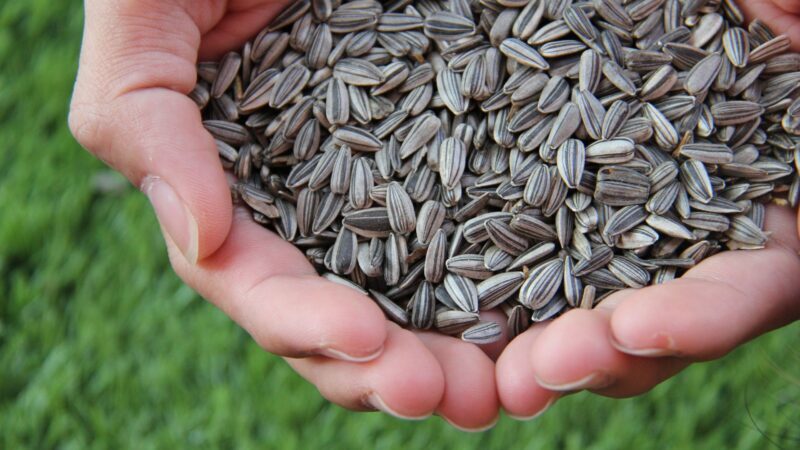
Blackbirds particularly enjoy grain such as oats, ripening or cracked corn, wheat, and weed seeds. Avoid including these in your birdseed mix and use other ingredients instead that are enjoyed by smaller birds such as red or white proso millet, safflower, and niger thistle seeds.
Related: How to Get Rid of Cowbirds | An Effective Guide
Other Tips for Keeping Blackbirds Away From Bird Feeders
- Use auditory bird scaring devices such as electronic sound devices, shell crackers, and predator alarm calls to deter blackbirds. The best time to use these is in the early morning and late afternoon.
- Visually frightening objects such as flashing lights, plastic wind turbines, and balloons that are attached to strings can also work against blackbirds. Make sure to relocate these objects regularly.
- Decoy trapping is effective for small blackbird infestations but you must contact your local wildlife official to set it up themselves or inform them that you are planning to install a decoy trap. A large, well-built decoy trap is able to catch 10 to 50 individuals.
- Ask for assistance from your local extension officers to control blackbirds.
Related: How to Keep Birds Away From Your Car? | Control and Prevention
Key Takeaways
Blackbirds, when they arrive in large numbers, are a big concern as they are quite aggressive against other bird species and are prone to attacking them when feeding on bird feeders.
They also release droppings which are hazardous to human health in urban and suburban areas, which is why getting rid of them by exclusion or separation, installing a wire cage or dome, regular sanitation, and changing bird feed inclusions should be a top priority, especially for homeowners.
Related: How to Keep Birds From Nesting on Porch? | The Effective Guide
List of Sources
Dolbeer, R. A., & Linz, G. M. (2016). Blackbirds.
Doney, J. (2014). Bird Feeder Basics.
Johnson, R. J., & Bron, M. B. (2003). Backyard Wildlife: Feeding Birds.
Missouri Department of Conservation. (n.d.). Blackbird Control.
Oppedahl, R. (n.d.). It’s Time to Feed the Birds.
University of Missouri Extension Missouri. (1993). Controlling Nuisance: Blackbirds in Crops.
- How to Get Rid of Copperheads | Practical Guide - August 27, 2023
- How to Get Rid of Corn Snakes | What Makes Them Aggressive? - August 27, 2023
- How to Get Rid of Alligators | Safety Measures and Removal Methods - July 16, 2023
